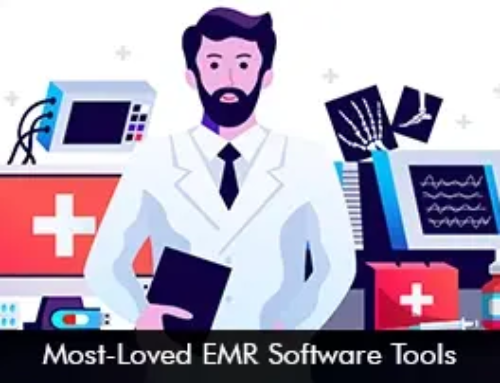In honor of Dry Eye Awareness Month, which takes place in July, we wish to raise awareness about the importance of eye health and how various technological solutions can improve overall eye care. Managing dry eye syndrome effectively can help reduce, discomfort, irritation, and blurry vision. If you are experiencing any symptoms please visit your ophthalmologist.
Specialty-Specific Software: Ophthalmology EMR Software
The Electronic Medical Records solution has modernized healthcare in terms of data storage, collection, and patient care. An ophthalmology EHR software is critical in supporting the success of eye care professionals and ophthalmologists. The specialty-specific software technology is designed to meet the unique needs of eye care and helps optimize practice workflows. The robust platform automates tedious tasks so eye care specialists can focus on their patients.
Common Features Present in an Ophthalmology EHR System
The following are key aspects of ophthalmology EMR software:
- Patient Records Management: This functionality enables ophthalmologists to create and maintain patient records seamlessly.
- Diagnostic Imaging Integration: Good ophthalmology software integrates with imaging devices to easily capture and store images in patient records.
- Clinical Decision Support: CDS tools in the system provide guidelines and treatment protocols. This supports the provider’s decision-making process.
- e-Rx: E-prescribing tools enable ophthalmologists to electronically prescribe medicines, reducing the probability of errors and enhancing patient safety.
- Appointment Scheduling: The patient scheduling process is automated and streamlined with the appointment scheduling feature.
- Specialty-specific templates: In-built templates and SOAP notes help to automate workflows.
- Interoperability options: An ophthalmology EHR Software may support interoperability standards of DICOM and HL7. This supports the smooth exchange of patient data and boosts care coordination.
Ophthalmology EMR software attempts to improve productivity, accuracy, and patient care in ophthalmic offices by utilizing these capabilities.
Benefits of Leveraging Ophthalmology Software
The main aim of specialty-specific software is to automate and streamline optometry clinic operations. Here are the main advantages that can be reaped by eye clinics when utilizing the ophthalmology solution:
Real-time Data Accessibility
Administrative staff members and care providers can access patient data via software technology to make informed decisions. The real-time data is accurate and can be simply accessed due to cloud-based functionality.
Smart Reports with Images
The ophthalmology EHR software can provide a quick and holistic view of the patient’s treatment progress and health data. The single screen gives a snapshot of all test reports, treatment plans, key vitals, and eye examinations.
Accurate Documentation
By digitizing patient records, the EMR software lowers the possibility of mistakes brought on by missing or illegible paperwork. Improved documentation helps to reduce medical errors.
Efficient Appointment Management
The appointment scheduling feature streamlines and automates the patient scheduling process. Ophthalmology clinics can easily manage patient appointments and combat the issue of no-shows.
Conclusion
While integrating ophthalmology software may involve an initial investment in terms of software procurement and training. The long-term benefits of improved efficiency, patient care, and office productivity can greatly outweigh the expenses.
It is wise to ensure that the software vendor chosen has a good market reputation and offers the key functionalities, and support to users to ensure continued success from their technology.








